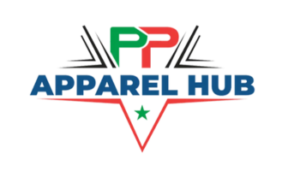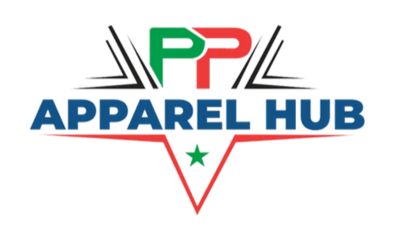The art of printing on fabric and clothes has evolved significantly over the years, offering countless methods to transfer designs onto textiles. Whether for personal projects, promotional merchandise, or custom clothing lines, the choice of printing method can greatly impact the final product’s look, feel, and durability. From traditional techniques like screen printing to modern advancements like digital printing, each method serves specific purposes.
Finding the right printing method often depends on factors like fabric type, desired design, and budget. If you want to know what types of printing brands and store are using? Read on!
Screen Printing for Fabric and Clothes
Screen printing is one of the most popular and oldest fabric printing methods. This technique involves creating a stencil, or screen, through which ink is pressed onto the fabric. The mesh screen acts as a barrier that blocks areas where you do not want ink, allowing the design to be transferred onto the material. This method is ideal for large batches and simple designs with fewer colors.
There are three types of screen printing
- Flat screen printing: Ideal for flat surfaces like shirts and bags.
- Rotary screen printing: Best for large rolls of fabric, often used in the mass production of clothing.
- Hand-screen printing: A more manual technique, suitable for smaller quantities or custom designs.
Screen printing is cost-effective for mass production and provides long-lasting results. The prints are durable and have a high-quality, soft finish. However, it is not the best method for complex or multi-colored designs, as each color requires a separate screen, increasing production time and costs.
Pros:
- Durable prints that last long
- Cost-effective for large orders
- High-quality, soft feel
- Ideal for designs with solid colors
Cons:
- Requires skilled labor
- Not suitable for detailed or multi-color designs
- Large space is needed for printing and drying
Indirect Screen Printing for Fabric and Clothes
Indirect screen printing, also known as plastisol transfer printing, is a variant of traditional screen printing. This method involves printing the design onto a transfer sheet, which is then applied to the fabric using heat and pressure. The advantage of indirect screen printing is that it allows for better control of the printing process and reduces the mess associated with direct screen printing.
Plastisol ink is commonly used for this technique, especially for fabrics made from a blend of polyester and cotton. It produces vibrant colors that are long-lasting, and the design is flexible, making it a suitable option for various clothing types.
Pros:
- High-quality, durable prints
- Suitable for smaller orders
- Less messy than traditional screen printing
- Good for intricate designs with multiple colors
Cons:
- The transfer sheet can be costly
- Requires specialized equipment
- The design may crack over time if not applied correctly
Screen Transfer Printing for Fabric and Clothes
Screen transfer printing is a versatile method that combines elements of traditional screen printing with heat transfer technology. The process begins by printing the design onto a transfer paper using a screen printing technique. Then, the design is transferred to the fabric using heat and pressure.
This method is well-suited for designs with multiple colors, small details, or even photographic images. The print produced is bright, vivid, and highly durable. However, the process can be more time-consuming and expensive due to the additional step of transferring the design.
Pros:
- Ideal for designs with multiple colors and intricate details
- Vibrant, bright prints
- No limitations on the number of colors used
Cons:
- More expensive than traditional screen printing
- Requires a flat printing surface, limiting design placement
- Longer production times
Silkscreen for Fabric and Cloth
Silkscreen printing, also known as silk screen printing or serigraphy, is a specific type of screen printing that uses a fine mesh fabric screen to transfer ink onto a substrate. The ink is applied through the mesh using a stencil, allowing for the creation of detailed designs. Silkscreen printing is often used for larger production runs and produces vibrant, high-quality prints.
One of the advantages of silkscreen printing is its ability to handle thick inks, which makes it ideal for printing on dark-colored fabrics. However, it may not be the best choice for small quantities or designs that require a high level of detail.
Pros:
- High-quality, durable prints
- Cost-effective for large production runs
- Suitable for printing on dark-colored fabrics
Cons:
- Not ideal for highly detailed or complex designs
- Longer setup times
- Limited to certain fabric types
Digital Printing for Fabric and Clothes
Digital printing has revolutionized fabric printing by offering a fast and efficient method for transferring designs directly onto fabric. In this process, a digital printer uses specialized ink to create designs directly onto the fabric without the need for stencils or screens. Digital printing allows for full-color designs, gradients, and intricate details without the limitations of traditional methods.
This printing technique is perfect for small orders or one-off designs. It is especially useful for designs that require a high degree of customization, such as photos or detailed artwork.
Pros:
- No limitations on the number of colors or design complexity
- Ideal for small batches and custom designs
- No setup costs or preparation needed
Cons:
- More expensive for large orders or large print sizes
- Not suitable for certain fabric types
- Ink may not be as durable as other methods
Embroidery for Fabric and Clothes
Embroidery is a popular method for adding logos, text, and decorative designs to fabric using thread. Unlike printing, embroidery involves stitching the design onto the fabric using specialized machines. This method is often used for high-end clothing or uniforms because of its professional, upscale appearance.
Embroidery is highly durable and can withstand wear and tear, making it an excellent choice for workwear and merchandise. However, it can be more expensive and time-consuming than other printing methods, especially for intricate designs.
Pros:
- Long-lasting, durable results
- Luxurious, professional appearance
- Ideal for logos and small text
Cons:
- Expensive for large designs or bulk orders
- Limited in color choices (up to 15 colors)
- Cannot accommodate intricate or highly detailed designs
DTG Printing for Fabric and Clothes
Direct-to-Garment (DTG) printing is a cutting-edge method that allows for printing complex designs directly onto fabric using specialized inkjet printers. DTG printing is perfect for designs with many colors, gradients, or photographic elements. The process works similarly to how a regular inkjet printer prints on paper, but the printer uses fabric-friendly inks that bond with the material.
DTG printing produces soft, high-quality prints that do not feel heavy or stiff. It’s ideal for small batches or personalized items. However, the equipment can be expensive, and the ink may not be as durable as screen printing for long-term wear.
Pros:
- Ideal for complex designs and full-color prints
- No setup fees, making it cost-effective for small batches
- Soft, flexible prints that do not feel heavy
Cons:
- Expensive equipment and ink
- Not as durable as other methods for long-term use
- Requires specialized printers and space
FAQs
What is printing in fashion?
Printing in fashion refers to the process of applying designs, patterns, or images to fabric using various printing techniques. This process is integral to creating unique, customized garments, accessories, and other textile products.
What is printing on clothes called?
Printing on clothes is commonly referred to as “fabric printing” or “textile printing.” The specific method used may vary, such as screen printing, digital printing, or heat transfer printing.
What does print mean in clothing?
In the context of clothing, “print” refers to any graphic, design, or pattern that is applied to fabric, usually using one of the many printing techniques available in the textile industry.
What is printing on a shirt? Printing on a shirt involves applying a design or image to the fabric using a variety of methods such as screen printing, digital printing, or heat transfer printing. This can be done for both simple and intricate designs, depending on the desired effect.



